Cake Mix Science
 Friday, July 27, 2012
Friday, July 27, 2012 I remember when I was young, observing my mother make cakes, and how something always kind of bugged me: the difference between cake batter and frosting.
Consistency-wise, the cake batter and the frosting really didn't seem terribly different to me--why did they have to be treated so differently? One went in the oven, and the other had to wait til that part was cool and was then spread all over the baked part.
But what would happen if you just combined the cake and the frosting before baking? Could you streamline the process?
Although I'm much older now, I'm clearly not wiser, because I took the time to see what would happen today. I conducted my experiment with Duncan Hines Butter Golden Cake Mix and Whipped Fluffy White Frosting in a tub.
I started out by respectfully following the directions. The mix asked to be combined with 3 large eggs, 1/2 cup water, and 7 tablespoons of softened butter. I did so.
Per the directions, I mixed it in a large bowl in my stand mixer on low speed until combined, then jacked up the speed and mixed for four more minutes. Meanwhile, the oven was preheating.
And then I went rogue. I took the entire tub of frosting, and folded it into the cake batter. It made the consistency of the batter silky and sticky. And delicious.
Here's what it looked like before going in the oven.
I spread the thick batter in the prepared cake pans and baked it for 22 minutes, as suggested on the box. I divided it between two 9-inch cake rounds. I baked one first, in case I messed up.
I know you're not supposed to, but since I was already breaking the rules I opened the oven part-way through baking. Here's what it looked like. Weirdly it looked like it had mini marshmallows in the middle.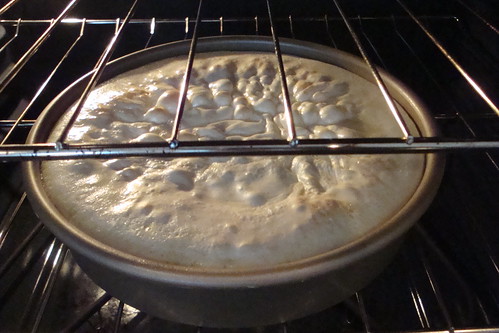
When I took the cake out of the oven, here's what greeted me.
It was a bit jiggly in the middle, but it appeared to have set on the sides and top. So I let it cool for a while - a long while, about 2 hours. During this time it deflated somewhat.
Then I flipped it over on to a plate. It was gooey in the middle, but not really liquid. More pudding-like, or gooey butter cake innards-like.
I thought "since it already has frosting, does that mean I don't have to frost it?". And then I quickly answered myself: "Don't be stupid, of course you still have to frost it."
So I did. And I added sprinkles.
When cut into at room temperature, the center was quite gooey. Cutting was kind of difficult. I got frosting on my fingers...but I made it out of this situation OK.
After chilling the cake in the fridge, cutting was much easier.
So how did the cake taste? It was actually pretty good. It was more dense than a typical cake--while it had risen in the oven, it deflated into a dense round after cooling. It was somewhat like a Philadelphia butter cake or gooey butter cake in its texture--crunchy on the outside, gooey and creamy in the center.
Actually, I'd go so far as to say I'd do this again. The slice I had was decidedly tasty--very moist, and extremely decadent. Final word? I want more.
 cakespy mischief,
cakespy mischief,  experiments
experiments 








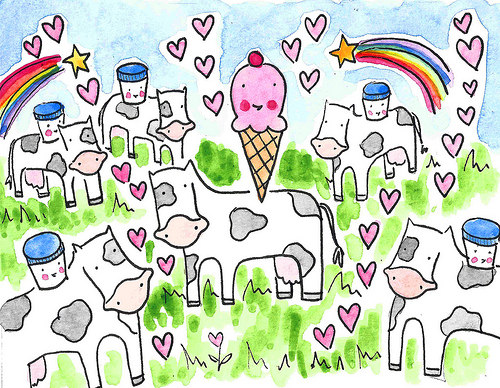
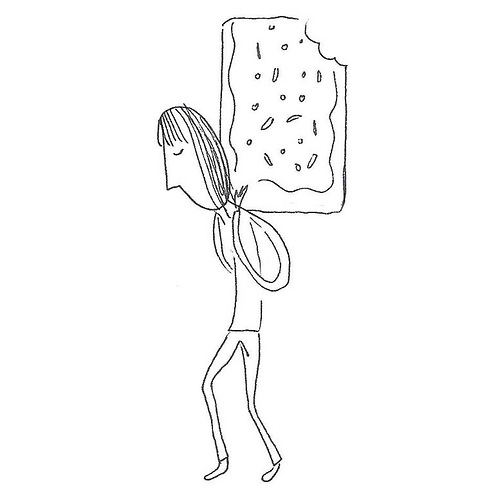


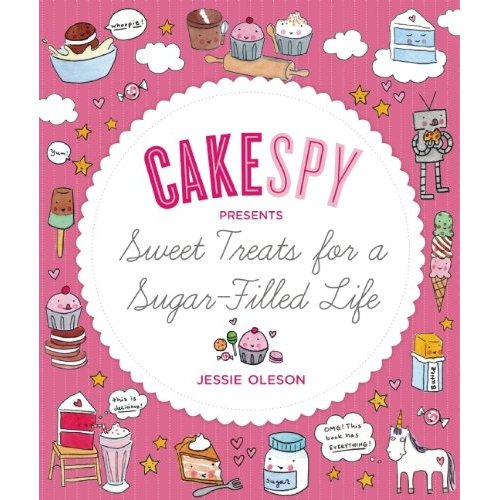
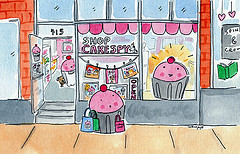

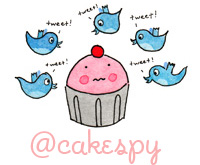
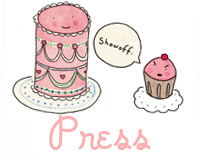

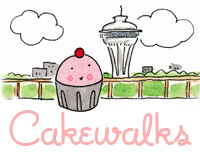
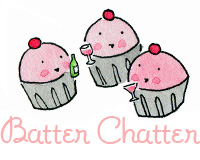





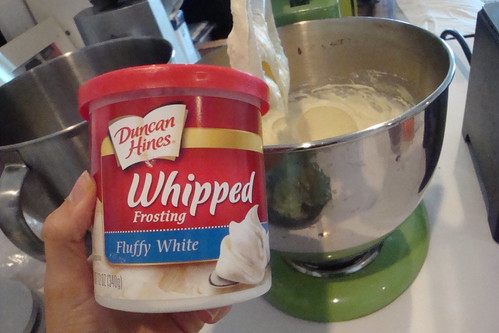

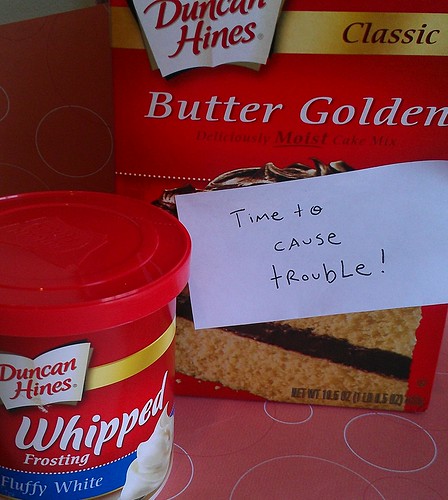
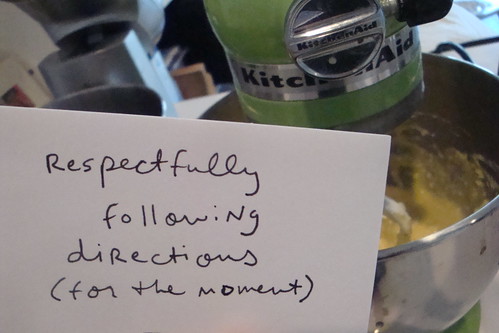
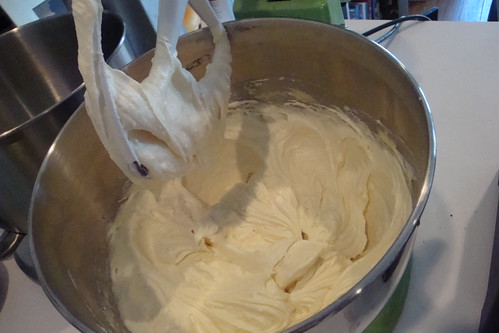
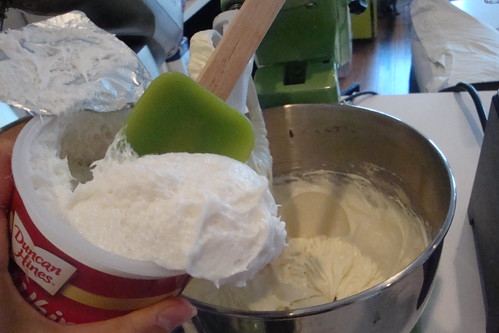
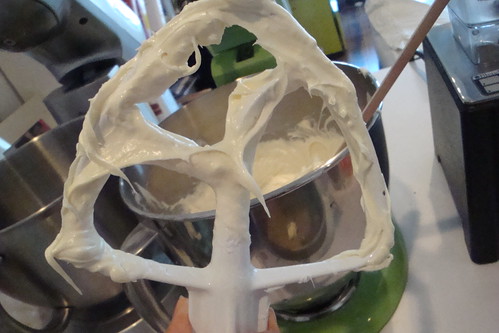
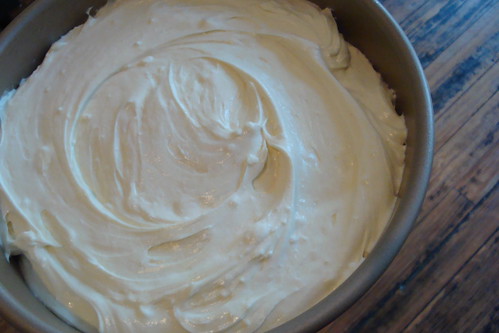
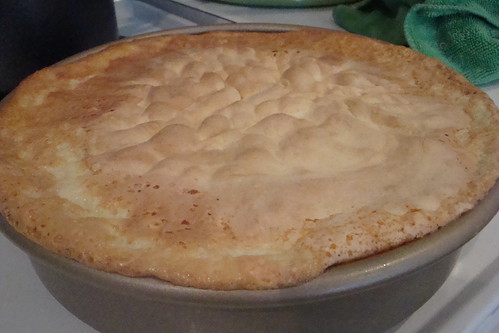
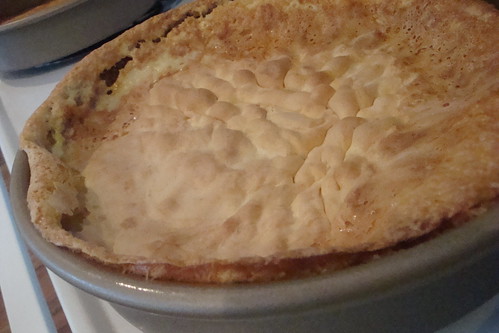
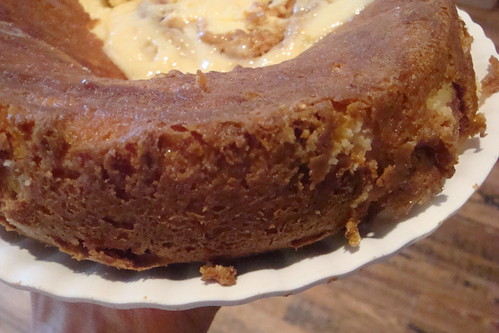

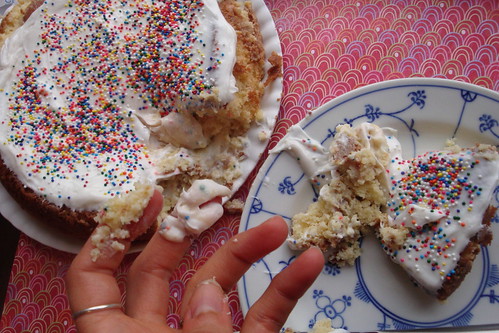
Reader Comments (16)
you are fun
let's set up a cake mix camp?
we can have cake mix classes, cake frosting demo's, cake treasure hunts and
sprinkle decorating forums.
OK?
So, my roommates and I made it today using pillsbury cake mix and frosting. I didn't use whipped. The cake batter was thick and yummy.
We actually put it in a 13x9 inch pan. It did take longer to bake, about 36 minutes. It deflated when taken out, but was really rich, dense, moist and very good. No gooey center though. We topped it off with vanilla frosting and tons of sprinkles.
It is insanely delicious and will make it again using the two 9 inch pans instead of the 13x9inch. It added a wonderful delicious finish to our junk food day here at college. I love your creativity, and I really enjoy your blog and this cake was delicious! I can't wait to make it for my boyfriend.